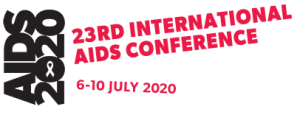To end AIDS, we must address the forces driving it
March 3, 2019
The following article was originally published by The Hill.
By Raniyah Copeland, President and CEO of the Black AIDS Institute, and Chris Beyrer, Desmond M. Tutu Professor of Public Health and Human Rights at Johns Hopkins University.
Recently, the CDC released data showing that declines in HIV rates have stalled in the U.S., after about five years of substantial declines. The new report — looking at trends from 2010-2016 — reveals what many of us working in the field already know: prevention efforts are not reaching all communities equally.
The overall leveling off in new HIV infections includes declines among some groups and increases among others. Rates dropped by about 17 percent among heterosexuals and about 30 percent among people who inject drugs, but remained stable among gay and bisexual men — who account for about 70 percent of new infections. Further, among gay and bisexual men, new infections decreased by 16 percent among white men, but remained stable among Black men, and increased by 30 percent among Latino men.
During his State of the Union earlier this month, President Trump announced a bold new plan to end HIV in the U.S. over the next decade. HHS has since specified targets of a 75 percent reduction in new HIV infections in five years and at least a 90 percent reduction in ten years. This goal is affordable and feasible but will only succeed with meaningful engagement of people living with HIV and a focus on the underlying factors driving the epidemic.
First, the good news. The plan will focus for the next five years on 48 counties with the highest burden of HIV as well as Washington, D.C., San Juan, Puerto Rico, and 7 rural states that have substantial HIV incidence. We welcome the Administration’s approach, focusing on the epicenter of an epidemic is tested and effective public health strategy. Half of new infections occur in the South, a rate that is not improving. In 2017, HIV diagnoses declined by 17 percent in the Northeast, yet remained stable in the South.
Rates also vary greatly by race. Nationwide, Black people make up 13 percent of the U.S. population but account for 42 percent of new HIV diagnoses annually. Ending the HIV epidemic among Black communities and the South would effectively end the epidemic as we know it.
To achieve this, we must dismantle the forces driving HIV, including racism, homophobia and mass incarceration. These inequities threaten our country’s credibility as a leader in the global HIV response. We must continue to raise awareness, increase access to pre-exposure prophylaxis (PrEP) and increase access to treatment in communities that are most affected in the U.S. — including women and Black and Latino gay and bisexual men.
If the administration is serious about ending the HIV epidemic then they must expand access to the Affordable Care Act, particularly in the southeastern U.S. People living in these states need better and more affordable health coverage options to prevent and treat HIV. Of course, the Administration is unlikely to support expansion of the ACA. This is the Administration that is pursing anti-trans policies in the military, dismantling government LGBTQ health initiatives, normalizing racist rhetoric, and supported cuts to HIV funding.
To accelerate progress at home, we can draw inspiration from global policy. Established under President George W. Bush and reauthorized for the third time this past December, the President’s Emergency Plan for AIDS Relief (PEPFAR) remains one of our country’s greatest bipartisan success stories. Today, the program supports 24 million people with antiretroviral therapy, has provided 15.2 million men with voluntary male circumcisions which have been proven to reduce HIV risk, and drove a 25-40 percent decrease in HIV diagnoses among adolescent women in PEPFAR focus countries.
The International AIDS Conference in 2020, to be held in Oakland and San Francisco offers a platform for U.S. officials to demonstrate global leadership. This gathering will return to the US at an important political moment, ensuring that HIV will be at the top of the policy agenda in 2020. A coalition of HIV and human rights organizations have voiced concern around hosting the conference in the US citing the dangerous rhetoric and policies of this administration. This only further reiterates how critical ensuring human rights are to implementing HIV strategies.
Our call to action for lawmakers is to authorize funding for the new US HIV strategy — and to remove harmful policies that will undermine progress. These include the ban on trans people in the military, criminalizing HIV transmission, harmful rhetoric and racist drug policies. What’s more, they must expand the ACA. That the new Congress is younger and more reflective of the communities hardest hit by HIV than ever before gives us hope that this is possible.


